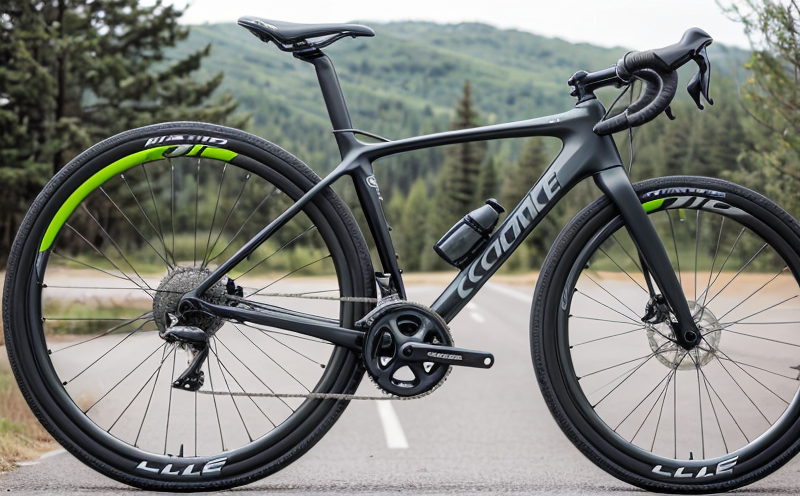IEC 62933-2-1 Cycle Life Testing of Electrical Energy Storage Systems
The International Electrotechnical Commission (IEC) standard IEC 62933-2-1 provides a comprehensive framework for the cycle life testing of electrical energy storage systems (EESS). This service focuses on evaluating the durability and longevity of these systems, which are critical components in renewable energy storage solutions. The primary objective is to ensure that EESS can maintain performance over extended periods under various operational conditions.
The standard outlines detailed protocols for conducting cycle life tests that simulate real-world operating scenarios. It covers a wide range of testing parameters including charging and discharging cycles, temperature variations, and other environmental stressors. By adhering to these rigorous standards, manufacturers and developers can verify the reliability and durability of their products before they enter commercial use.
The testing process involves several key steps starting with thorough preparation of the specimens. This includes conditioning the batteries according to specified guidelines to ensure consistent performance metrics across all samples. Once prepared, the batteries undergo a series of charge-discharge cycles while being monitored for specific parameters such as voltage, current, internal resistance, and temperature.
The cycle life testing is not just about counting the number of cycles but also assessing how each cycle impacts the overall health and capacity retention of the battery. The results provide valuable insights into the degradation patterns which help in optimizing future designs and materials selection. Compliance with IEC 62933-2-1 ensures that products meet global industry standards, thereby enhancing trust among end-users.
Our state-of-the-art laboratory facilities equipped with advanced monitoring systems ensure accurate data collection throughout the testing process. Our team of experienced professionals uses cutting-edge instrumentation and software tools to analyze test results meticulously. The final report includes not only raw data but also in-depth interpretations along with recommendations for improvements if necessary.
| Parameter | Description | Measurement Method | Acceptance Criteria |
|---|---|---|---|
| Voltage | Maintain nominal voltage within specified limits during cycles | Automated measurement using digital voltmeters | No more than 10% variation from initial value after completion of tests |
| Internal Resistance | Evaluate changes in internal resistance over multiple cycles | Impedance analyzer measurements before and after each cycle | No increase greater than 25% compared to baseline |
| Cycle Count | Total number of charge-discharge cycles performed on the sample | Counting via software interface connected to testing equipment | Must reach minimum specified in the standard for successful completion |
| Capacity Retention | Percentage of initial capacity retained after prescribed cycle count | Comparison with initial discharge curve using statistical analysis | Achieve at least 80% retention to pass the test |
This table summarizes some critical parameters that are monitored during IEC 62933-2-1 cycle life testing. Each parameter plays a crucial role in determining whether an EESS meets the required durability standards.
Benefits of IEC 62933-2-1 Cycle Life Testing
- Achieves regulatory compliance ensuring safe and reliable operation
- Promotes product longevity by identifying potential weaknesses early on
- Improves customer satisfaction through consistent performance across all units
- Facilitates better informed decision-making regarding material choices and design optimizations
The benefits of this testing extend beyond mere compliance. It allows manufacturers to identify any issues early in the development stage, thus saving time and resources that would otherwise be wasted on producing substandard products. Moreover, meeting these standards enhances brand reputation among consumers who increasingly demand sustainability and reliability from their purchases.
Impact on Customers and Satisfaction
For customers, the benefits are significant. Products that have undergone IEC 62933-2-1 cycle life testing can be trusted to deliver consistent performance over their expected lifespan. This builds confidence in both consumers and businesses alike. Additionally, compliance with international standards like IEC promotes global acceptance of products, making them suitable for export markets.
By ensuring high-quality outputs through rigorous testing procedures, we contribute significantly towards reducing waste and minimizing environmental impact associated with premature failures of EESS units. This ultimately leads to greater customer satisfaction and loyalty.
Use Cases and Application Examples
- Solar power plants requiring long-term reliable storage solutions
- Wind farms needing efficient energy management systems
- Data centers demanding high availability backup power supplies
- Electric vehicle manufacturers looking to enhance battery performance
| Use Case | Description |
|---|---|
| Solar Power Plants | Testing helps in selecting optimal batteries for large-scale solar projects ensuring uninterrupted power supply even during periods of low sunlight. |
| Wind Farms | Evaluating the suitability of different battery chemistries for integrating into existing wind farms to optimize energy storage and distribution. |
| Data Centers | Determining appropriate battery configurations that can handle peak loads and ensure continuous operation during planned maintenance outages. |
| Electric Vehicles | Incorporating findings from these tests into next-generation EV batteries to improve range and reduce charging times. |
The diverse applications highlight the versatility of this testing methodology across various industries. Each use case underscores the importance of robust cycle life testing in ensuring reliable performance under real-world conditions.





